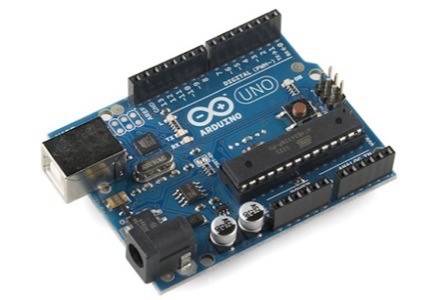
The potential of 3D printing to transform the way we get things – the market is predicted to hit $3.1 billion in the next four years – gets a lot of press. But not much of that attention has focused on the unique role of open source hardware in enabling 3D printing to realize its promise.
Open source software has been a key player in all kinds of disruptive technologies – from the Web to big data. Now the nascent and growing open source hardware movement is helping to power its own disruptive revolution.
What Is Open Source Hardware?
Open source hardware is a component or device that has been licensed to allow anyone to examine, duplicate and modify the hardware as they wish. The openness affects the intellectual property of the device. You can either download the specs and build the device or component yourself, or buy the hardware for a small assembly fee from a vendor. As with open source software, sharing is not only allowed, it’s encouraged.
Open source hardware doesn’t get much attention outside of geek circles, but it is starting to have a real-world impact.
According to industry analyst Terry Wohlers, 3D printing (also known as additive manufacturing) is forecast to have an “industry-wide growth [of] $3.1 billion by 2016 and $5.2 billion by 2020.” And in the midst of this revolution is a small, Italian-made open source microcontroller known to many in this new community of things: Arduino.
What Is Arduino?
Arduino is the brainchild of an international team of five engineers: Massimo Banzi and Gianluca Martino of Italy; David Cuartielles of Spain; and David Mellis and Tom Igoe of the U.S. According to Banzi, who recently made a presentation at TEDGlobal 2012, Arduino has developed the Interactive Design Institute Ivrea (IDII) to help students there actually build prototype objects that could react to their inputs. Using a foam model of a prototype cell phone, for instance, simply would not make sense.
But there was another catch: “They don’t have five years to learn electrical engineering. We only have one month.” This constraint meant that Banzi and his team had to put together something easy to build upon and as open as possible.
And they aren’t kidding about the open aspect: Arduino’s hardware is completely open sourced (under Creative Commons), with design files and specs available, as well as control software (under the GPL) and documentation (also under Creative Commons). The only thing non-free about Arduino is the trademarked name – and that’s just to keep standards in place.
Arduino’s openness means that the micro-controller board can be found in the heart of a lot of open source hardware devices today, including 3D printers, toys and thousands of projects within the maker community. Commercial vendors and do-it-yourselfers alike are picking up Arduino boards and customizing them for their projects with the eventual launch of some compelling devices.
How Open Source Hardware Is Driving 3D Printing
While this kind of technology is obviously a boon to the DIY communities that have formed around the Instructables and Thingiverse communities, they are starting to pick up commercial steam, too. Matternet takes former military drone technology and with modifications based on Arduino hardware, uses these cheaply made unmanned aerial vehicles to deliver vital goods across developing nations’ territories via a “roadless network.”
Arduino’s openness is also starting to fuel vendors’ innovation to make devices and launch them at a fraction of the normal costs associated with prototyping and general manufacturing. Search for “Arduino” and “Kickstarter,” and you will get a small taste of vendor dependence on Arduino.
Making it easier, faster and cheaper to produce physical objects could fundamentally shift the manufacturing paradigm. As 3D printing, powered by Arduino and other open source technologies, becomes more prevalent, economies of scale become much less of a problem. A 3D printer can print a few devices – or thousands – without significant retooling, pushing upfront costs to near-zero.
This is what The Economist calls the “Third Industrial Revolution,” where devices and things can be made in smaller, cleaner factories with far less overhead and – significantly – less labor.
Moving Manufacturing Back to the U.S.?
“The revolution will affect not only how things are made, but where. Factories used to move to low-wage countries to curb labour costs. But labour costs are growing less and less important: a $499 first-generation iPad included only about $33 of manufacturing labour, of which the final assembly in China accounted for just $8,” the Economist stated. “Offshore production is increasingly moving back to rich countries not because Chinese wages are rising, but because companies now want to be closer to their customers so that they can respond more quickly to changes in demand.”
Not everyone agrees with the disruptive power of this kind of digital manufacturing, but given the open source nature at the heart of much of this technology, innovation in this area will be upon us fast, and it will bring changes – expected or otherwise – to the way we get things.
One little blue-and-white microcontroller may not be the fulcrum to move the world, but open source hardware is definitely making the lever longer and easier to push.










